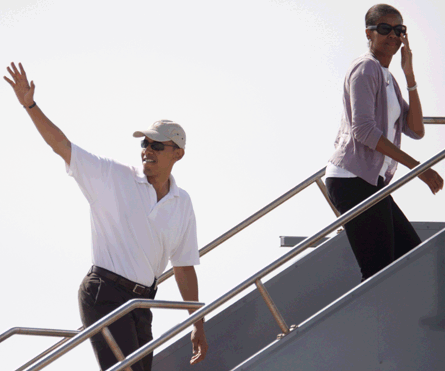Twelve associations representing all facets of commercial aviation in December took their pleas to jumpstart NextGen development to the US Congress. They requested $3 billion of the economic stimulus package be allocated to equip aircraft to use fundamental elements of the system - automated dependent surveillance - broadcast, required navigation performance and the GPS wide area augmentation system.
The stakeholders requested the majority of funding - $2.5 billion - be allocated to ADS-B. If the requested investment survives the scrutiny of Congress and the president in crafting the economic stimulus plan, up to 20,000 aircraft could be fitted with avionics for NextGen operations in about two years.
Upgrades will not only create efficiencies in an air traffic control system underpinned by 20th century technology, but also foster "high-paying green jobs in the high-tech fields of civil aviation manufacturing, flight operations, maintenance and environment", according to the formal proposal.
 |
|---|
© Rex Features |
Along with the $3 billion request for equipping aircraft, stakeholders have also asked for a $1 billion boost for the Airport Improvement Programme.
Conversations with transport advisers to Obama's transition team prompted the industry to press Congress to invest in airports and NextGen ATC, says Aerospace Industries Association vice-president of civil aviation and former FAA assistant administrator for policy, planning and environment Dan Elwell. Those advisors included former FAA administrator Jane Garvey and former Air Line Pilots Association president Duane Woerth.
NO DIRECT DISCUSSIONS
While he admits that no direct discussions between signatories on the letter and the Obama transition team have taken place on the $4 billion investment, Elwell says the group "expects every bit of it".
Elwell says wildly fluctuating fuel prices and the current economic crisis leave carriers with little available capital to complete the aircraft upgrades themselves. He warns that if aviation is absent from the president's economic stimulus plan, development of NextGen infrastructure is in danger of falling even further behind.
A slowdown in commercial aviation demand created by the economic downturn supplies an opportunity to begin equipping those 20,000 aircraft with minimal disruption, says Elwell. But that could prove a detriment to securing the investment necessary to complete those installations. Nick Lacey, chief operating officer of aviation consulting firm Morten, Beyer and Agnew, highlights challenges in making a case for aviation infrastructureinvestment as passenger and freight traffic both decline.
Yet Lacey agrees with most entrenched aviation stakeholders in the USA that major funding could accelerate airspace modernisation, citing congested airspace as a significant inhibitor to industry growth.
Bringing NextGen to reality does have supporters within the US Congress, with Democratic Senator John Rockefeller one of the issue's most ardent proponents.
Noting that the Bush administration during its eight-year tenure "chronically failed" to fund ATC modernisation, an aide to Rockefeller says the senator would like to have funding to support NextGen included in the stimulus package. The senator is now chairman of the Commerce Committee in the US Senate, whose subcommittees include aviation.
PIECE OF THE PIE
As his administration attempts to prioritise a slew of industries clamouring for their piece of the economic stimulus package, the incoming president and his team also inherit the task of deciding how to fund FAA, which includes roughly $20 billion up to 2025 to complete NextGen development.
For almost two years, funding for FAA has occurred through the passage of continuing resolutions after its long-term reauthorisation covering fiscal years 2008-11 expired.
Most of 2007 was marred by public battles between commercial, general and business aviation operators over a controversial $25 per flight user fee. FAA reauthorisation then stalled as the funding debate continued and highway amendments to the Senate version of the bill stymied its passage.
Elwell says that while most would agree FAA reauthorisation needs passage this year, whether it happens is anyone's guess.
The aide to Senator Rockefeller acknowledges that even pushing the failed bill from 2008 through before the latest FAA funding extension expires in March is doubtful.
Both Rockefeller and Air Transport Association of America chief executive James May are pressing for a FAA funding overhaul that looks outside traditional mechanisms.
In December, May pushed tax credit bonds - public-private partnerships that offer tax incentives for investors in a given project. Noting the success of those bonds in surface transport projects, May says he held discussions with the Obama transition team about those funding sources.
Another potential obstacle to ushering FAA reauthorisation through Congress and to the president for his signature is the National Air Traffic Controllers Association (NATCA)-represented workforce that has made known its discontent since the FAA imposed a contract on members in 2006.
NATCA in 2007 succeeded in ensuring language included in FAA reauthorisation passed by the US House of Representatives would require the resumption of contract negotiations. Similar language was not included in the bill that failed to pass the Senate last year.
Source: Flight International























